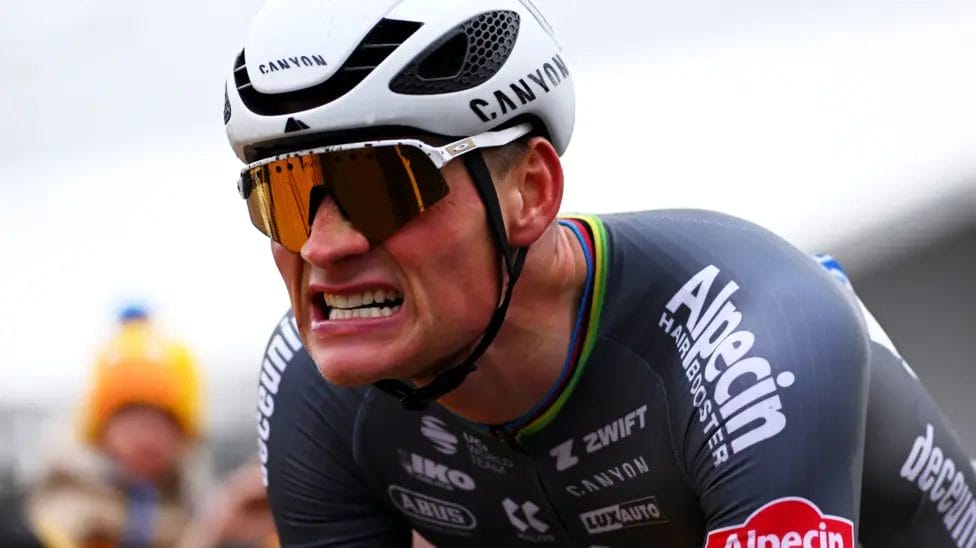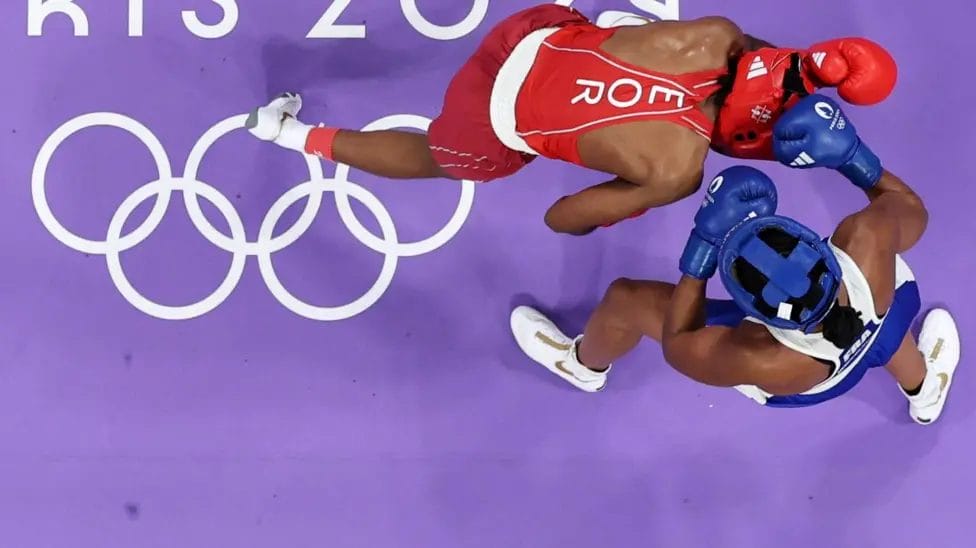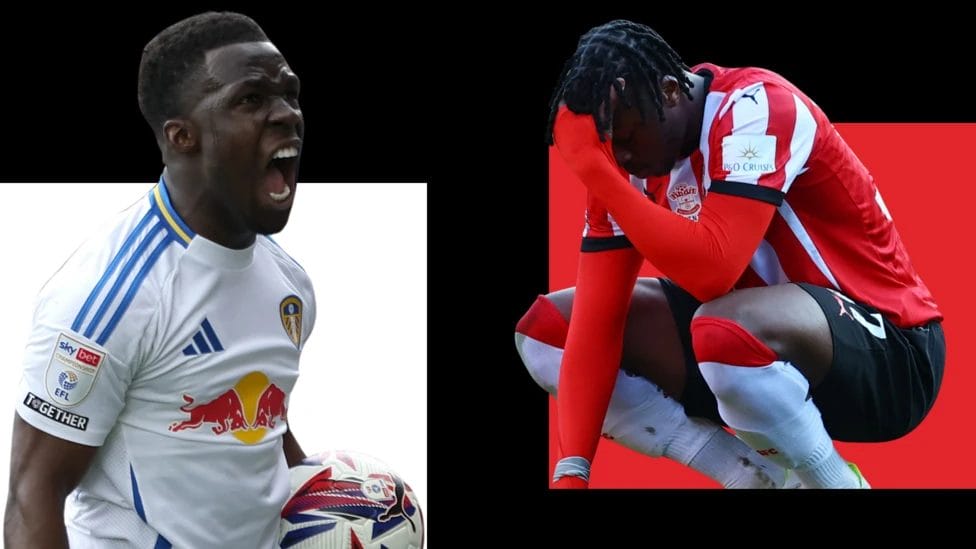
Mathieu van der Poel is no stranger to the chaos of racing on the road or in the mud — he thrives in it. But what unfolded during last month’s E3 Saxo Bank Classic in Belgium had little to do with sport and everything to do with a disturbing trend that continues to dog professional cycling: hostile behaviour from spectators.
The 30-year-old Dutchman, who won the race with an explosive solo performance, was spat on by a roadside spectator in the final 30km. The incident happened while he was riding alone at the front of the race, powering through the streets of Ronse in East Flanders. While Van der Poel didn’t let it slow him down on the day, the act was yet another ugly reminder that crowd behaviour in cycling is sometimes far from respectful.
Thankfully, the perpetrator didn’t disappear into the crowd. Belgian police have since confirmed the individual responsible has been identified and fined. But as these types of incidents begin to stack up — spitting, thrown bottles, verbal abuse — there’s a growing concern that the sport may be losing control of its relationship with its fans.
Culprit Identified and Fined Following Ronse Incident

The East Flanders public prosecutor’s office confirmed to that Ronse police had tracked down the person who spat on Van der Poel, with the individual confessing to the act. As a result, they’ve been hit with a fine of up to €350 (around £300). No further legal action will be taken, and the case is now officially closed.
A relatively mild punishment, perhaps, when weighed against the seriousness of the act — spitting on a rider mid-race is not only vile but potentially dangerous. And though it didn’t derail Van der Poel’s performance that day, it clearly symbolises something much more concerning about crowd behaviour in cycling today.
This wasn’t just an isolated moment of madness. It fits into a worrying pattern that seems to be growing year on year.
Another Race, Another Incident: Van der Poel Struck Again at Paris-Roubaix
Just two weeks after the Ronse spitting incident, Van der Poel found himself in the headlines again — this time at Paris-Roubaix, one of the sport’s most iconic and brutal races. As he tore away from the field in a typically fearless solo attack, he was struck by a water bottle hurled from the roadside.
It didn’t stop him — he went on to claim a historic third consecutive win at the Hell of the North, joining a select club of greats to have done so — but the incident again raised eyebrows.
On this occasion, the alleged bottle-thrower handed himself in at a West Flanders police station the following day. The local prosecutor is now considering what charges, if any, will be filed.
For Van der Poel, it’s become something of an unfortunate subplot to his otherwise glittering career. These flashpoints with spectators — some verbal, others physical — are becoming too frequent to be dismissed as mere bad luck.
Van der Poel’s History of Run-Ins With the Crowd
This isn’t a new development. Van der Poel has long been a lightning rod for emotion — both adoration and animosity — from crowds around Europe. Whether it’s the prestige of his name, his aggressive style of racing, or simply the target that comes with being at the top, he’s been in the firing line more than most.
In December 2023, during a cyclocross race in the Netherlands, Van der Poel himself reacted to persistent heckling and being pelted with liquid by spitting back at a group of spectators. After the race, he didn’t shy away from explaining his reaction, saying he had simply had enough.
A few months later, during the Tour of Flanders, yet another iconic race, he had beer thrown at him by someone in the crowd. He kept racing. He always does. But how long before something goes too far?
Where Is the Line Between Passion and Disrespect?
Cycling is unique among professional sports in the intimacy it offers fans. There are no barriers, no ticket gates. The riders pass just metres away from spectators lining the roads, often for hours, through countryside and city centres alike. It’s part of what makes the sport beautiful — but it also comes with risks.
The line between passionate support and inappropriate behaviour is starting to blur. Of course, the vast majority of fans are respectful, knowledgeable, and deeply passionate about the sport. But it only takes one or two to cross that line to put riders at risk or compromise the integrity of a race.
It’s not just about Mathieu van der Poel. Over the years, plenty of top riders have had run-ins with fans who’ve either gotten too close, interfered with the race, or shown outright aggression.
From Chris Froome being pushed and spat on during mountain stages of the Tour de France to Tadej Pogačar being slapped mid-climb in the Alps, the stories are becoming more frequent, and frankly, more disturbing.
Cycling’s Governing Bodies Must Take Crowd Safety Seriously
The question now is: what can be done? While authorities like the UCI and local race organisers have taken steps to improve security at certain events, many races still rely on a patchwork of local volunteers, police, and common sense.
It’s not feasible to line every kilometre of a 200km race with security staff — that’s the reality. But targeted zones, particularly near decisive climbs or final kilometres, could be monitored more effectively.
There’s also a case to be made for harsher punishments. While the €350 fine for the Ronse incident might act as a mild deterrent, it doesn’t send a particularly strong message. In an era where spitting is not only disrespectful but also a health risk, some in the sport believe stronger consequences are needed to protect riders.
Van der Poel Keeps Winning — But at What Cost?
For all the off-bike drama, Van der Poel continues to let his legs do the talking. His form in 2024 has been exceptional. Victory at the E3 Saxo Bank Classic and a stunning third win at Paris-Roubaix only add to his already legendary status.
He remains a rider who defines races — attacking when others hesitate, riding alone when others wait for teammates, and taking risks that few dare to. And yet, behind the victories, there’s a sense that he’s carrying more than just physical pressure.
To be constantly on guard, to wonder whether someone might throw something or try to provoke you in the heat of the moment — it’s a burden no athlete should bear, let alone one performing at the highest level of the sport.
Time to Protect the Riders — Before It’s Too Late
As cycling continues to grow in popularity, particularly during marquee events like the Spring Classics and Grand Tours, the need for stronger spectator management becomes even more important. Riders are not just elite athletes — they’re also vulnerable human beings, often just inches away from the crowds.
The recent fines and public statements are steps in the right direction, but they must be the beginning of a broader cultural and logistical shift in how the sport protects its stars.
Mathieu van der Poel might be tough enough to ride through spitting and bottle-throwing, but he — and the rest of the peloton — shouldn’t have to.







